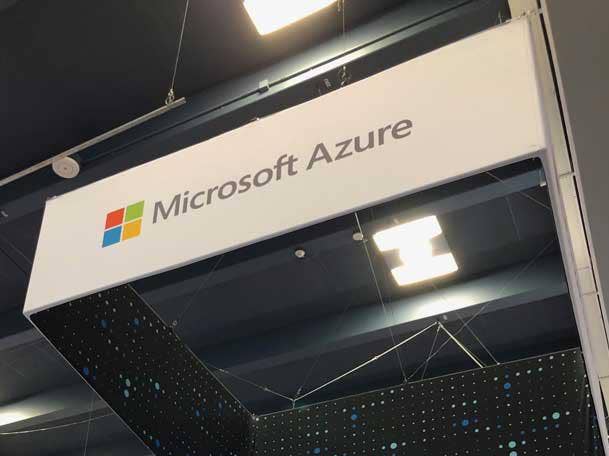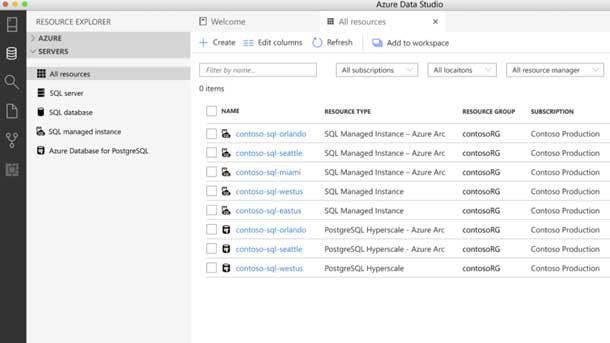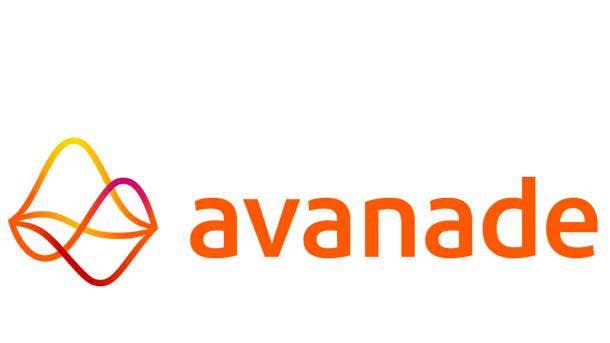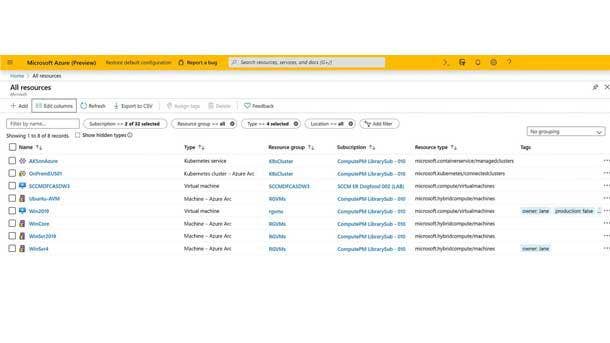Why Microsoft’s Azure Arc Is A ‘Value Proposition’
‘When you think about what we’re doing versus what our competition or what other vendors are doing, we provide the most flexible solution -- bar none,’ said Arpan Shah, the general manager leading Microsoft’s product marketing for Azure infrastructure.

Just more than a year ago, Microsoft Azure expanded its hybrid offerings with the public preview of Azure Arc, a set of technologies that brings Azure’s cloud management capabilities and services to virtually any environment.
Today, the cloud provider has more than 1,000 customers using Azure Arc, which extends an organization’s control plane to manage servers and Kubernetes clusters across on premises, multi-cloud and multi-edge, with governance from Azure.
“What we want to do is really enable customers to use Azure wherever they want it, even on their own infrastructure,” said Arpan Shah, the general manager who leads Microsoft’s product marketing for Azure infrastructure. “We’re seeing some really good adoption, and they’re using it for different use cases. And now that it’s generally available, we expect a lot more momentum, a lot of customers to begin using it in their production environments.”
Azure Arc-enabled servers became generally available in September,
allowing organizations to manage their Windows and Linux machines hosted outside of Azure -- on a company’s private network or on rival clouds -- consistent with how they manage native Azure virtual machines.
Azure Arc-enabled data services, which currently allows the Azure SQL Managed Instance and Azure PostgreSQL Hyperscale database offerings to run in any environment using Kubernetes, has been in public preview since September. And Azure Arc-enabled Kubernetes, which can be used to attach and configure Kubernetes clusters inside or outside of Azure, has been in public preview since May.
“Azure Arc really enables two things,” Shah said. “Number one, it enables management and governance of resources that can live virtually anywhere. And these can be servers -- that’s either virtual machines or bare metal servers -- they can be Kubernetes clusters or even SQL databases. What it provides the customer is a single pane of glass, where they can see those resources alongside everything else in Azure, and they can use the same tools, the same scripting. They can govern, monitor and back all these services up no matter where they live.”
Azure Arc also enables customers to deploy services -- data services, as of now -- on any Kubernetes environment.
“If a customer has Kubernetes running on premises or at the edge, they can then deploy Azure data services and take advantage of the latest technology and pay-as-you-go model,” Shah said. “We’re seeing tons of customers use it. We’ve seen a lot of traction on the technology.”
Future Azure Arc innovations will include additional management capabilities and the enablement of more services.
“Today with Azure Arc, you can govern your environments with Azure Policy, you can secure them with Azure Security Center, you can monitor them with Azure Monitor,” Shah said. “We’ll keep expanding based on customer feedback.”
The general availability of Azure Arc-enabled servers comes as Amazon Web Services pushes its hybrid AWS Outposts offering, and Google Cloud pushes its hybrid and multi-cloud Anthos platform.
“When you think about what we’re doing versus what our competition or what other vendors are doing, we provide the most flexible solution -- bar none,” Shah said. “We’ve always built Azure hybrid by design and so, over the years, we’ve seen that customers want flexibility.”

’Value Proposition’
Azure Arc is a “value proposition” that resonates with customers who want hybrid, multi-cloud and multi-edge capabilities and want to take advantage of Azure innovation in the way they want, according to Shah. And it also holds value for Microsoft Partners helping to manage those complex hybrid IT estates, he said.
DexMach, a Temse, Belgium-based Microsoft Gold Partner, is one of 12 Azure Arc launch service providers along with Acuutech, Atmosera, Avanade, BrainScale, ClearDATA, Cognizant, Fujitsu, Insight, Smartronix, SNP Technologies and T-Systems.
Azure Arc is about getting the manageability from a cloud environment down to the data center, said Glenn Mattys, head of customer innovation at DexMach.
“That’s the whole mindset that is changing in the lift-and-shift story you’re used to,” Mattys said. “If we implement some cloud projects for our customers, we provide them with easy dashboarding to get all the insights about the cost performance, compliance and security of the cloud environment. With Azure Arc, we can plug in this information from the on-prem data center in those dashboards, and so the customer has a single pane of glass in order to have those insights of their full IT estate. It provides them capabilities to automatically do updating and policy management also on those on-premise services from the cloud with cloud-first principles.”
Some customers are using Azure Arc because, even in the fullness of time, they must keep some applications on premises for data sovereignty or latency reasons. Other are moving more and more applications to the edge. Another class of Azure Arc customers wants to move to the cloud, but not immediately, and they’re using Arc for applications before they migrate.
“It could be a step to move to Azure, but it doesn’t have to be,” Shah said. “Some customers are going to use it much, much longer than that, and we absolutely respect that, and we want to support that scenario.”

Azure Arc Vs. AWS Outposts And Google Cloud’s Anthos
The fully managed AWS Outposts is AWS’ hybrid bid to extend its cloud infrastructure, services, APIs and tools to customers’ data centers, co-location spaces or on-premises facilities, with compute and storage racks built with AWS-designed hardware.
“Amazon has never fundamentally believed in hybrid or multi-cloud, and they never really built AWS hybrid by design like we have,” Shah said. “And I think what’s happened is, after a lot of customer and industry pressure, they’ve kind of acknowledged that hybrid is a customer reality, and they tried to take steps after that.”
The native version of AWS Outposts became generally available last December.
“They really followed Azure Stack Hub and, on the contrary, Azure Stack Hub (has) been in-market for over three years, and we have customers in over 60 different countries,” Shah said. “And also, while they have Outposts, they really don’t have a solution for customers that want their cloud technology in multi-cloud or on premises that lives outside of AWS.”
AWS last week also launched AWS ECS Anywhere and AWS EKS Anywhere, new container capabilities that allow customers to use Amazon Elastic Container Service and Amazon Elastic Kubernetes Service on premises in their own data centers and the cloud.
Meanwhile, there also are core material differences between what Azure Arc and Google Cloud’s Anthos offer, according to Shah. The fully managed Anthos platform allows customers to build and manage applications across on-premises data centers, Google Cloud and rival third-party clouds including AWS and Microsoft Azure. It became generally available on Google Cloud Platform with Google Kubernetes Engine (GKE) and data centers with GKE On-Prem in April 2019. Anthos on AWS and Anthos on bare metal also are generally available, and support for Microsoft Azure is in preview.
While Azure Arc supports any Kubernetes environment, so customers can choose the Kubernetes platform they want, not so for Anthos, according to Shah.
“Google is very prescriptive, really is very specific on you have to use GKE,” he said. “Azure Arc goes beyond Kubernetes. A lot of our customers use servers, whether they’re virtual machines, bare metal servers, Windows Server or Linux, and Azure Arc supports servers. (With) Azure Arc, we have the ability to use data services on any Kubernetes. You can take our Azure data services and deploy them on any Kubernetes environment, whether it’s on premises, in multi-cloud or the edge.”

Fujitsu And Azure Arc
The breadth of Arc covers what’s in AWS Outposts and in Anthos, but in a flexible, all-encompassing way, according to Andrew Brabban, vice president in charge of Microsoft global business development at Fujitsu, a Tokyo-based Azure Expert Managed Services Provider (MSP).
“From an enterprise customer perspective, it’s a more flexible tool to deal with more scenarios,” he said. “Outposts and Anthos both deal with particular scenarios and, when they’re right, deal with them very well. But from a broader enterprise customer perspective, there’s more use cases we can tackle with Arc as it stands today.”
“Arc allows us to have that cloud-centric view of the world, where we can manage a portfolio for the customer, but they can have some of that which hasn’t made it into public cloud still sitting in the data center,” Brabban said. “The center of their world, in that sense, is the control plane that they’ve got set around the public cloud, and the ability to see those non-cloud servers as just an extension of the whole cloud architecture provides that kind of consistency and overall approach.”
Fujitsu has been using Azure Arc with customers with servers that need to stay in their data centers and customers with legacy systems that have been very hard to move.
“The advantage with Azure Arc is that we can move them under a consistent server management infrastructure, and that allows us to improve the security around those services by applying modern, policy-based security strategies that are consistent with the strategies that we need to be built up around this stuff that they have migrated to the cloud,” Brabban said.
Azure Arc is flexible in terms of being able to look at lots of different types of infrastructure that’s left on premise, according to Brabban.
“We’ve got lot of customers who’ve got VMware stuff, but they’ve also got bare metal servers, other types of resources,” he said. “And with Arc, it’s quite easy to deal with those, and it’s very helpful especially when you’ve got scenarios where you’ve done most of the migration, and there are a smaller number of servers left.”
As an MSP, Fujitsu has spent a lot of time looking at Azure Arc not just on its own, but how it fits into other component offerings, including Azure Lighthouse, which enables cross- and multi-tenant management and allows for higher automation, scalability and enhanced governance across resources and tenants.
“Adding Arc to Lighthouse is beneficial from our perspective, because we then have a single view that allows us to look across multiple customers and to look across the resources that are in the public cloud and the associated resources that are still on premise,” Brabban said. “That extension in both those directions at the same time, and the fact that Arc and Lighthouse work together, is all about expanding…and making sure that we can optimize our shared service delivery for customers, which means we get the advantage of improving the quality and lowering the cost of those services.”

Avanade And Azure Arc
Seattle-based Avanade, a global systems integrator, managed services provider and Microsoft Platinum partner, is excited by the capabilities of Arc, according to Mike DeLuca, global lead for edge and hybrid at the company, which is a joint venture of Accenture and Microsoft.
“Avanade and our parent, Accenture...looked across all of the things that our customers are asking about, and we think that Arc is going to be a really competitive differentiator for the companies that adopt it,” DeLuca said. “We think it’ll give them benefits of the cloud with less investment.”
Avanade had been working closely with Microsoft around Azure Stack Hub, an extension of Azure that allows apps to run in on-premises environments with Azure services delivered to customers’ data centers.
“The message we were hearing from customers was that they like Azure Stack Hub, but they didn’t like the fact that it was sort of a second portal,” DeLuca said. “They really wanted the ability to control those resources from the Azure portal and see them in the Azure portal. We got together with our friends from Microsoft and had a good discussion about it, and they had some things that that they were working on, and all of that got pulled into what we now call Azure Arc.”
Avanade has about 6,000 nodes across approximately 30 customers under management for Azure Arc and a pipeline of customers asking about it.
“The key thing for us with Azure Arc is that it gives our customers and our managed service operators a unified control plane to see and affect workloads wherever they live,” DeLuca said. “They have the Azure API just like they know, they’ve got the tooling that they built around their workloads -- everything can connect to Azure and manage those workloads wherever they are.”
The other key is that Avanade can collect all of the same metrics for most Azure Arc workloads that it collects from workloads in the Azure cloud, according to DeLuca. “As a managed service provider, you can imagine that that’s fairly interesting and fairly exciting to us, because it enables us to be able to take the same patterns and practices and everything else that we’ve built for Azure and apply that back to workloads, regardless of where they live. That also enables us to really change how we migrate customers on the journey to the cloud.”
Avanade now has the ability to enroll customers’ machines in Arc, understand what they do and then make a decision to move them, as opposed to its prior “big bang” approach of “everything’s got to move.”
“With Arc data...we can look at those workloads where they actually live, look at how they’re performing, the types of traffic that they’re seeing and everything else, and then we can make an informed decision about what should move, and what should move first,” DeLuca said.
Customers across industries have an interest in Arc, according to DeLuca.
“Places that have lots of sites -- so retailers, manufacturing facilities, retail banking -- they’re all interested in using Arc to manage branch sites, because that gear can’t go away,” he said. “We’ve also got a lot of legacy, big-iron data center customers that just know that they’re never going to close their data center -- they’ve got too much gear in there, they’re big enough that they got the scale, it doesn’t make sense.”

Customer Use Cases
Africa’s Talking, a Nairobi, Kenya-based company that provides mobile voice and messaging and payment APIs for large organizations and developers across Africa and the Middle East, is an Azure Arc customer.
In the past, the company was updating its applications in a more manual way, but with Azure Arc, it’s able to effectively containerize its applications and deploy them around Africa and the Middle East very quickly and efficiently, according to Shah.
“Having all these diverse infrastructures in different locations and being able to deploy their applications and manage and update them very quickly, has been a huge value-add for Africa’s Talking,” he said.
Erlangen, Germany-based Siemens Healthineers, a medical technology company that develops applications for scanners and other hospital machines, also is an Azure Arc customer.
“They had new algorithms that could help detect COVID symptoms,” Shah explained. “Using Kubernetes and Azure Arc, they were able to very quickly develop these applications and deploy them across thousands of sites. And with Arc, they can govern and update these applications really, really efficiently. What used to take them a long time across all this diverse infrastructure, they’re able to do a lot more efficiently with Azure Arc.”
Ferguson, a wholesale distributor of plumbing supplies based in Newport News, Va., is another Azure Arc customer.
“They have a lot of data centers, where they have different types of servers, whether that’s Windows Server, Linux server, or they’re using SQL Server,” Shah said. “They’re using Azure Arc to kind of organize their estates across their hybrid environments, so they can govern and manage these all with Azure Arc and (get) tons of efficiency in cloud management across all their environments.”